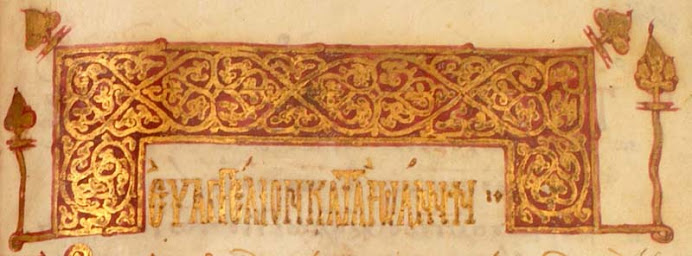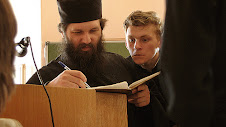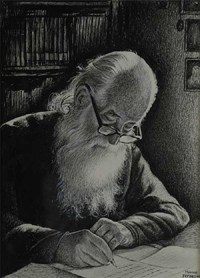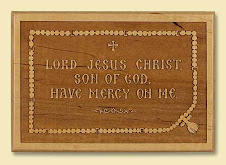 I'm pleased to announce that, thanks to the kind help of a battery-donor, my laptop has been returned to more or less working order. (I'm still awaiting a brain-donor for myself.) I'd like to thank all those who offered to pitch in for the price of the repair. I hope now to return to regular posting and to respond to the many emails and comments that I've received in the past month.
I'm pleased to announce that, thanks to the kind help of a battery-donor, my laptop has been returned to more or less working order. (I'm still awaiting a brain-donor for myself.) I'd like to thank all those who offered to pitch in for the price of the repair. I hope now to return to regular posting and to respond to the many emails and comments that I've received in the past month.This evening at Matins (which is in fact Matins for Thursday) the Great Canon of St Andrew of Crete is read in full along with the life of St Mary of Egypt (written by St Sophronius of Jerusalem). S. V. Bulgakov offers the following words about tonight's service:
At Matins on this day the Canon of St. Andrew of Crete is read in its entirety once a year, which was read in four parts on the first four days of the first week, and the Life of St. Mary of Egypt is read after the Sessional Hymn (Kathisma). According to this feature of the Thursday Matins it is called either the St. Andrew of Crete or the St. Mary of Egypt Thursday. In the Canon are collected and stated, as was stated above (see page 510), all the exhortations to fasting and repentance, and the Holy Church repeats it now in its fullness to inspire us new strength for the successful end to Lent. "Since", it is said in the Synaxarion, "the Holy Forty Day Lent is drawing near the end so that men should not become lazy, or more carelessly disposed to the spiritual efforts, or give up their abstinence altogether," that this Great Canon is offered. It is "so long, and so well-composed, as to be sufficient to soften even the hardest soul, and to rouse it to resumption of the good, if only it is sung with a contrite heart and proper attention". And the church Typikon (Ustav) orders the Great Canon to be read and chanted slowly and "with a contrite heart and voice, making three prostrations at each Troparion". For the same purpose of abstinence and strength, and attention to repentance is the reading of the Life of the Venerable Mary of Egypt. According to an explanation of the same Synaxarion, the Life of the Venerable Mary also "manifests infinite compunction and gives much encouragement to the fallen and sinners", representing itself to us as a paradigm of true repentance, and an example of the unutterable mercy of God. It serves as the continuation of the Canon of St. Andrew of Crete and a transition to the order of the following Sunday. Reading the Canon of St. Andrew and Mary of Egypt on the Thursday of the Fifth Week was established from the time of the Sixth Ecumenical Council.The Slavonic text of the service can be found here. (The entire Lenten Triodion in Slavonic, with links helpfully in both Russian and English, can be found here; links to all the other Slavonic service books, helpfully indexed in English, can be found here.) The Life of St Mary of Egypt can be found in Slavonic here. The text of the service can be found in Greek here. (The major Greek service books can be found online here.) For your convience I've added links in the Webography, called simply "Slavonic Service Books" and "Greek Service Books." Francophones can read the Great Canon here and the Life of St Mary here.
A sermon by St Innocent, Archbishop of Kherson (+1857), on the kontakion of the Great Canon can be found here. For more on the Great Canon, see this article by Fr Victor Potapov and this interview with Frederica Mathewews-Green. See also my post from this time last year, here.
The icon above depicts St Andrew of Crete and St Mary of Egypt.









2 comments:
Good news, Father. Glad to have you back!
You have returned in fine form, O Father Deacon!
Let us hope that this will be of lengthier duration than your last return.
Post a Comment